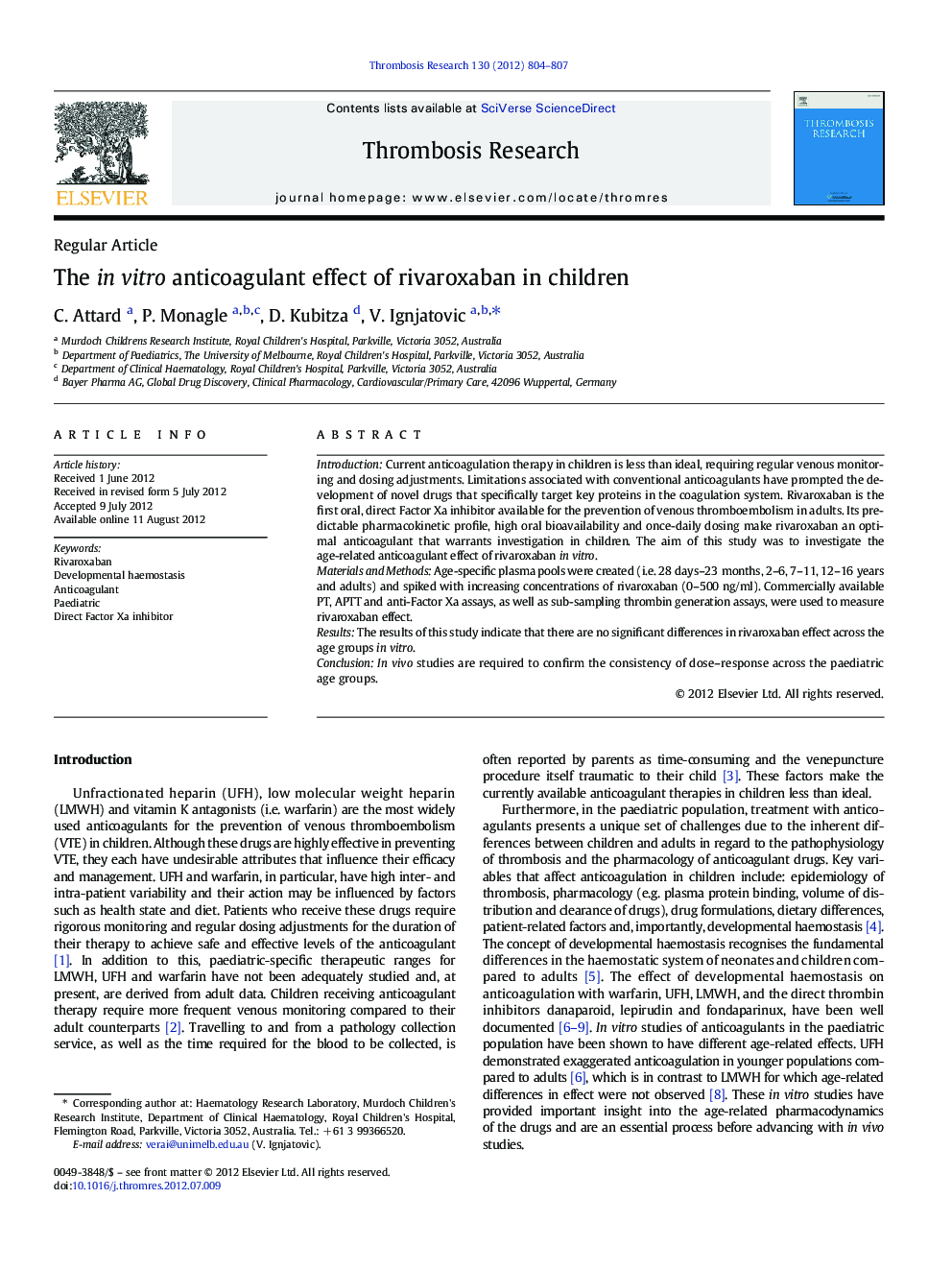| Article ID | Journal | Published Year | Pages | File Type |
|---|---|---|---|---|
| 3027605 | Thrombosis Research | 2012 | 4 Pages |
IntroductionCurrent anticoagulation therapy in children is less than ideal, requiring regular venous monitoring and dosing adjustments. Limitations associated with conventional anticoagulants have prompted the development of novel drugs that specifically target key proteins in the coagulation system. Rivaroxaban is the first oral, direct Factor Xa inhibitor available for the prevention of venous thromboembolism in adults. Its predictable pharmacokinetic profile, high oral bioavailability and once-daily dosing make rivaroxaban an optimal anticoagulant that warrants investigation in children. The aim of this study was to investigate the age-related anticoagulant effect of rivaroxaban in vitro.Materials and MethodsAge-specific plasma pools were created (i.e. 28 days–23 months, 2–6, 7–11, 12–16 years and adults) and spiked with increasing concentrations of rivaroxaban (0–500 ng/ml). Commercially available PT, APTT and anti-Factor Xa assays, as well as sub-sampling thrombin generation assays, were used to measure rivaroxaban effect.ResultsThe results of this study indicate that there are no significant differences in rivaroxaban effect across the age groups in vitro.ConclusionIn vivo studies are required to confirm the consistency of dose–response across the paediatric age groups.
